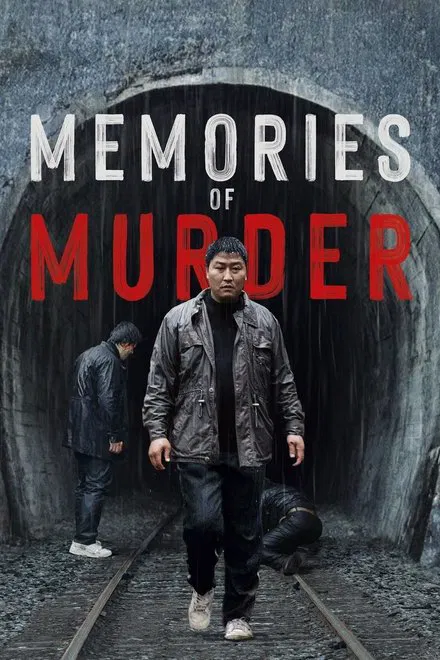
Directed by: Bong Joon-ho
Starring: Song Kang-ho, Kim Sang-kyung, Kim Roi-ha, Park No-shik, Byun Hee-bong
🧠 Introduction: The Search for Truth in Darkness
Memories of Murder (2003) is Bong Joon-ho’s haunting meditation on South Korea’s first confirmed serial killings. Based on real events, the film follows two detectives—Park (Song Kang-ho) and Seo (Kim Sang-kyung)—as they descend into a labyrinth of frustration, error, and obsession. The film’s ending, often cited as one of the most powerful in cinema, is a masterclass in ambiguity. Why does Park stare into the camera? What remains after justice fails and certainty crumbles?
🔍 The Elusiveness of Evil: Failure and Doubt
The investigation is a catalogue of missteps, brutality, and missed opportunities. Forensics fail, suspects are beaten, and innocence is sacrificed to the need for closure. The detectives’ contrasting methods—Park’s impulsiveness and Seo’s rationality—yield only frustration. The killer, a phantom, slips through their fingers again and again, as the horror spreads from the countryside to the heart of the nation.
⏳ The Weight of Obsession: What Remains Unsolved
Years pass. The case remains open, lives are upended, and the country changes. Park, once cocksure, becomes subdued and resigned. Seo, consumed by guilt, disappears. In a world demanding certainty, the case’s open wound refuses to heal. The specter of the killer lingers—a faceless reminder of limits, loss, and the unknowable depths of violence.
👁️ The Final Gaze: The Killer Among Us
In the film’s legendary last scene, Park revisits the site of the first murder years later. A young girl says a stranger once visited, “looking ordinary.” Park kneels, gazing directly into the camera—breaking the fourth wall. His eyes are haunted, questioning, desperate for answers that never come. This moment is a challenge to the audience: evil is not a monster, but hidden in plain sight. The unresolved gaze is both a plea and an accusation.
🎯 Ending Explained: Ambiguity as Truth
Memories of Murder refuses closure. Its ending is a recognition that some truths are forever beyond our grasp. In the absence of justice, we are left with questions, regrets, and the need to carry on. Park’s stare lingers—reminding us that the greatest mysteries lie not in the darkness, but in the faces we pass every day.